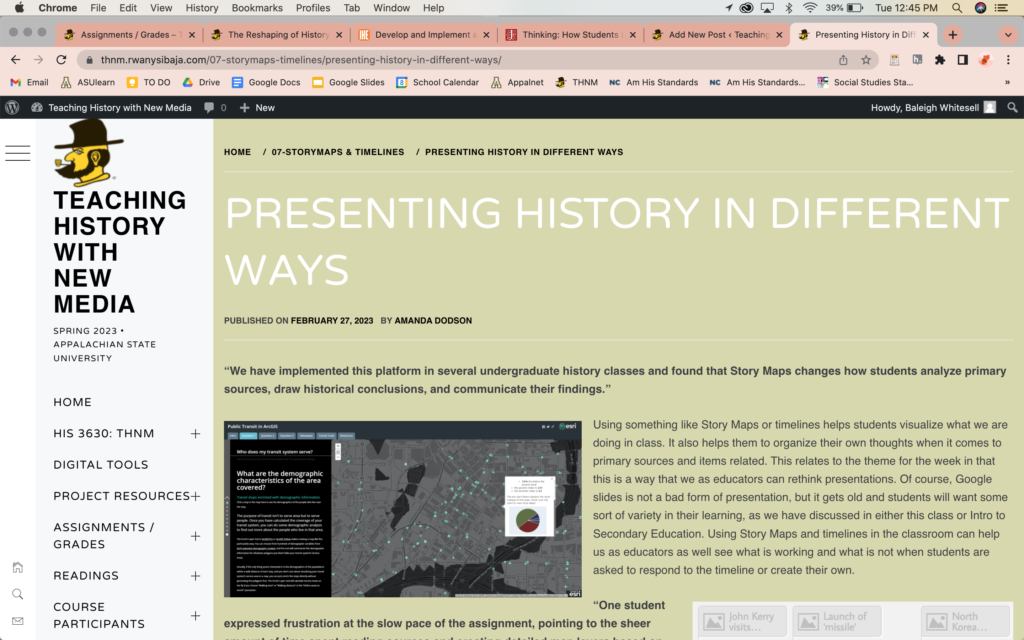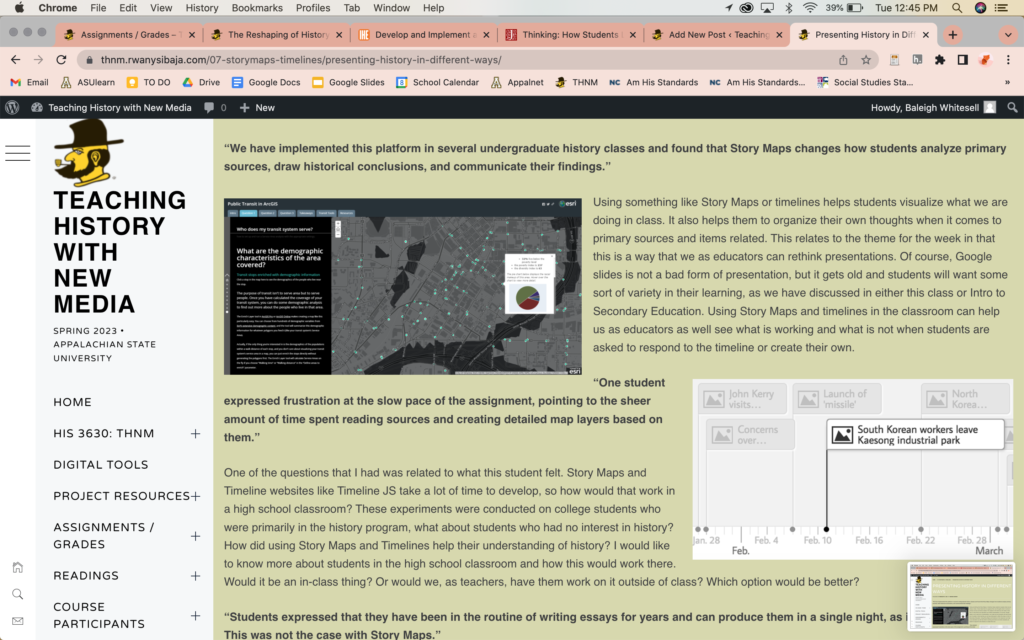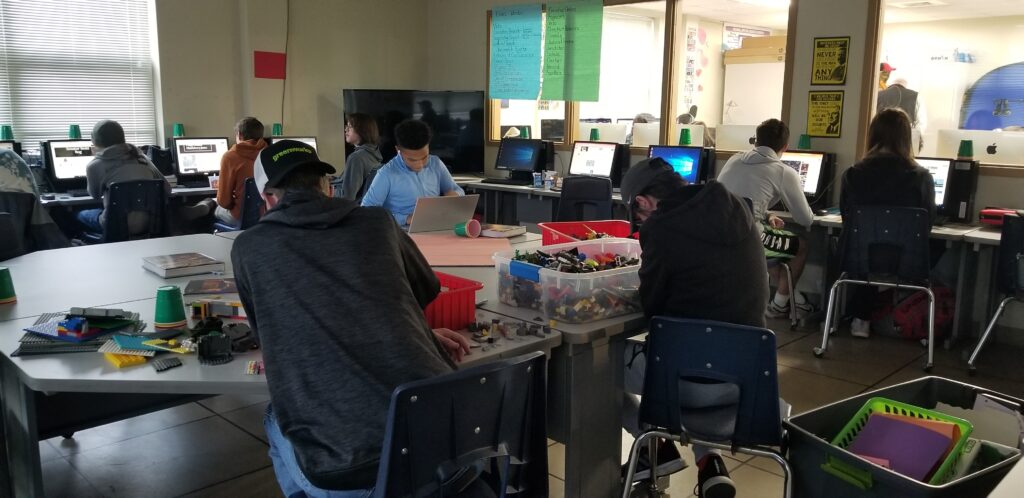As time has passed, writing and doing history has changed significantly. Databases containing historic documents have made their way into the field of history over the past few decades and have changed the game for all involved. As technology has evolved, historians have been tasked with becoming more digitally literate and savvy. This presents both a challenge and an opportunity for history educators.
In week two of this class, we discussed ways to implement platforms into history classrooms that provide space for students to write many different kinds of pieces and interact with their peers in a scholarly manner. This not only provides a classroom community that goes beyond the physical classroom, but shows students that history is a discipline that can be done communally! An article by Alex Galarza entitles “Develop and Implement A Course Blog” encourages teachers to go all in with a blog if they choose to use this kind of platform. Providing students with modeled example of the kind of work they are expected to do will create a culture of success within classroom communities and welcome students into their digital learning space well. A blog post by my classmate Amanda Dodson does a fantastic job at showcasing how an online platform can be interactive and fun for students! Using photos, maps, charts, and more can make an online space more visually appealing and therefore interactive. This is just one example of how interactive online spaces can make interaction with historical documents fun and valuable for student learning.


In Thinking: How Students Learn about the Past from T. Mills Kelly, a brief history of how history educators have conveyed information and historical thinking skills to their students was written. In the past and currently, I have been a student who enjoys lectures and learning in that sort of environment. Kelly discusses in his history how that is not always an effective way to learn history, but rather how students should be taught to inquire on their own about history. This is the overwhelming opinion held by most prominent history educators, and it has altered my personal view of learning and teaching history heavily. Just because I am a person who learns well that way does not mean that everyone else does. In fact, I am likely a less practiced historian because of the way that I enjoy learning history, instead of being impassioned by actively doing my own research. This chapter contains much information that can well-analyze the impacts that this class has had on my understanding of teaching, history, technology, and the digital age. In the picture featured below, students from my field experience this semester are featured doing history in a way that they can best express how they learn. They are mechatronics students in a magnet school creating circuit boards to represent the judicial process.

Too many students are under the impression that they do not like history because of the misconception that it is only a memorization of facts or some obsolete timeline. Kelly writes about the ingenious ideas of one Charles Homer Haskins, who thinks that students should be taught to do history in a small seminar setting in their first years of college, and only then they should be allowed to take large survey courses because they will then have the skill to synthesize and truly understand the weight of the facts they learn. This idea has taken hold in my own mind and changed how I understand history to be learned, and it is a practice I would like to be able to bring to fruition one day in my own history classrooms.